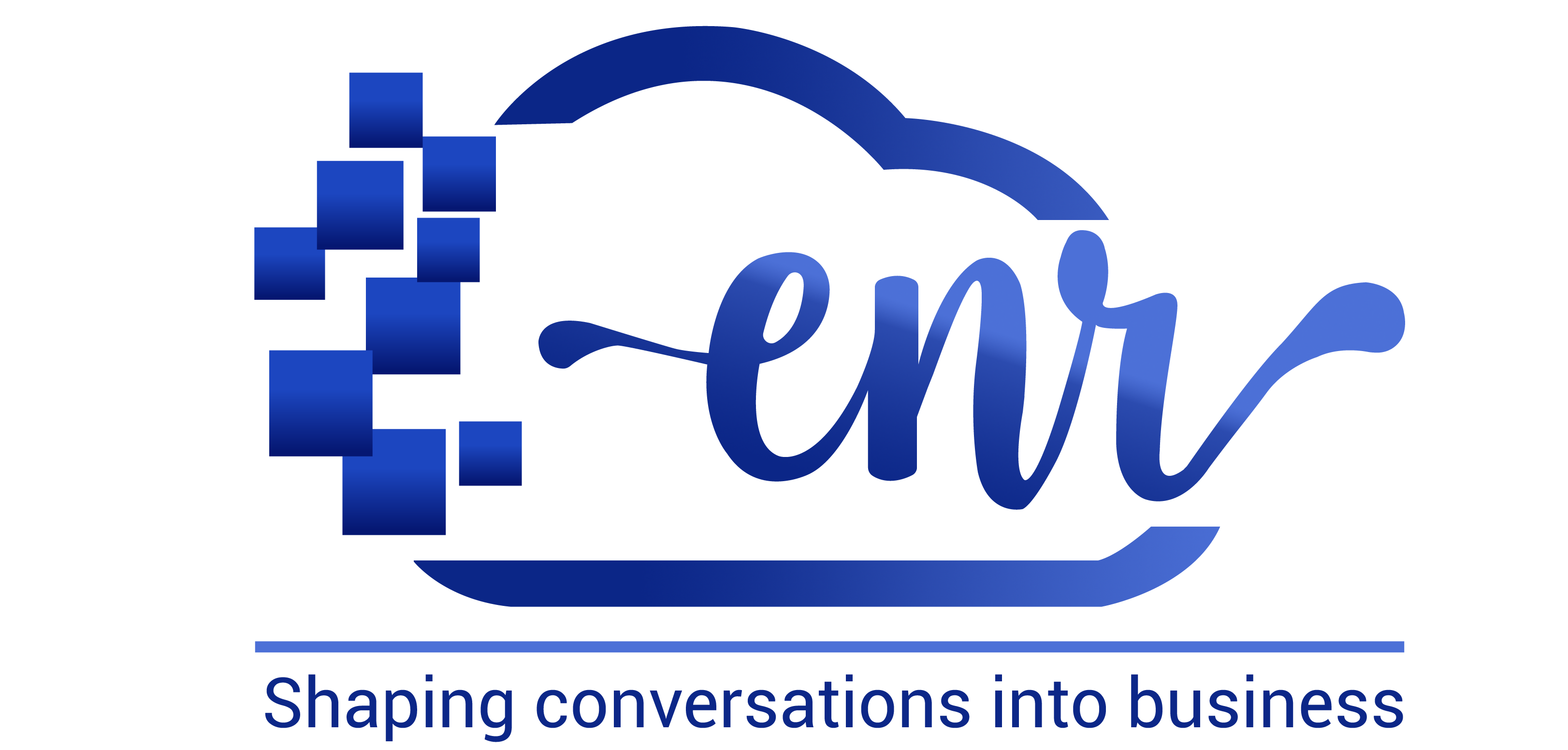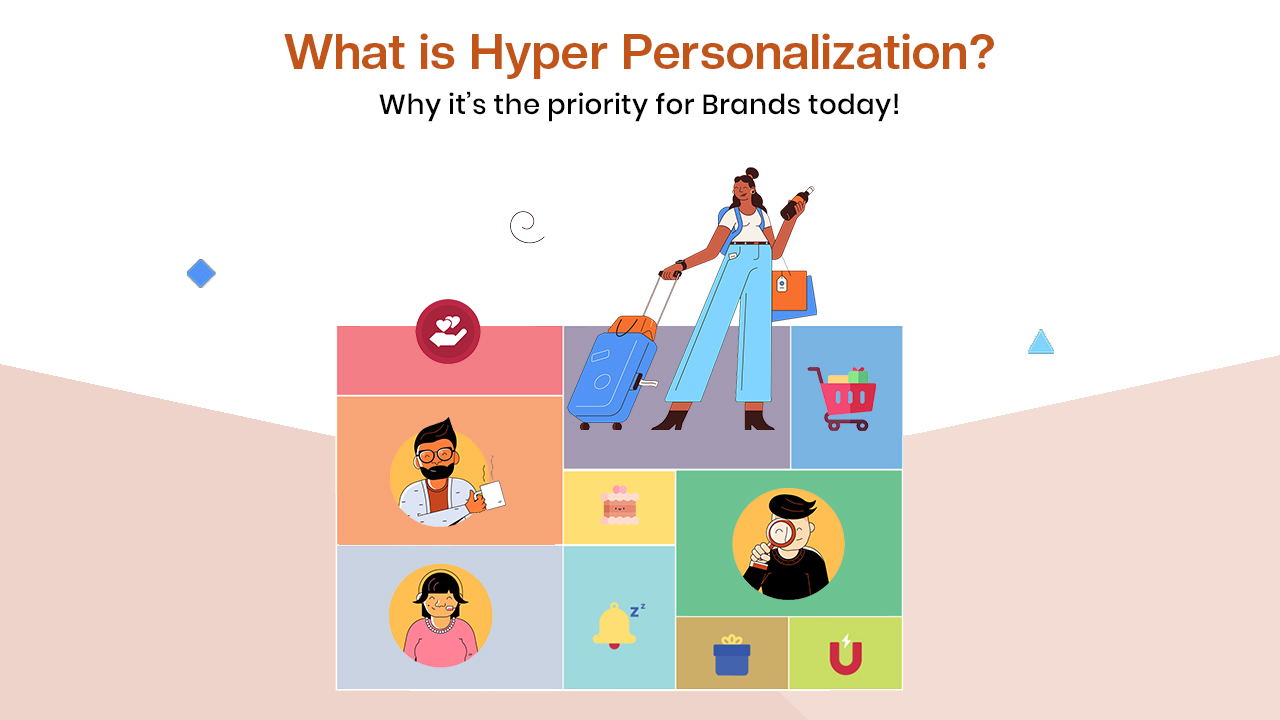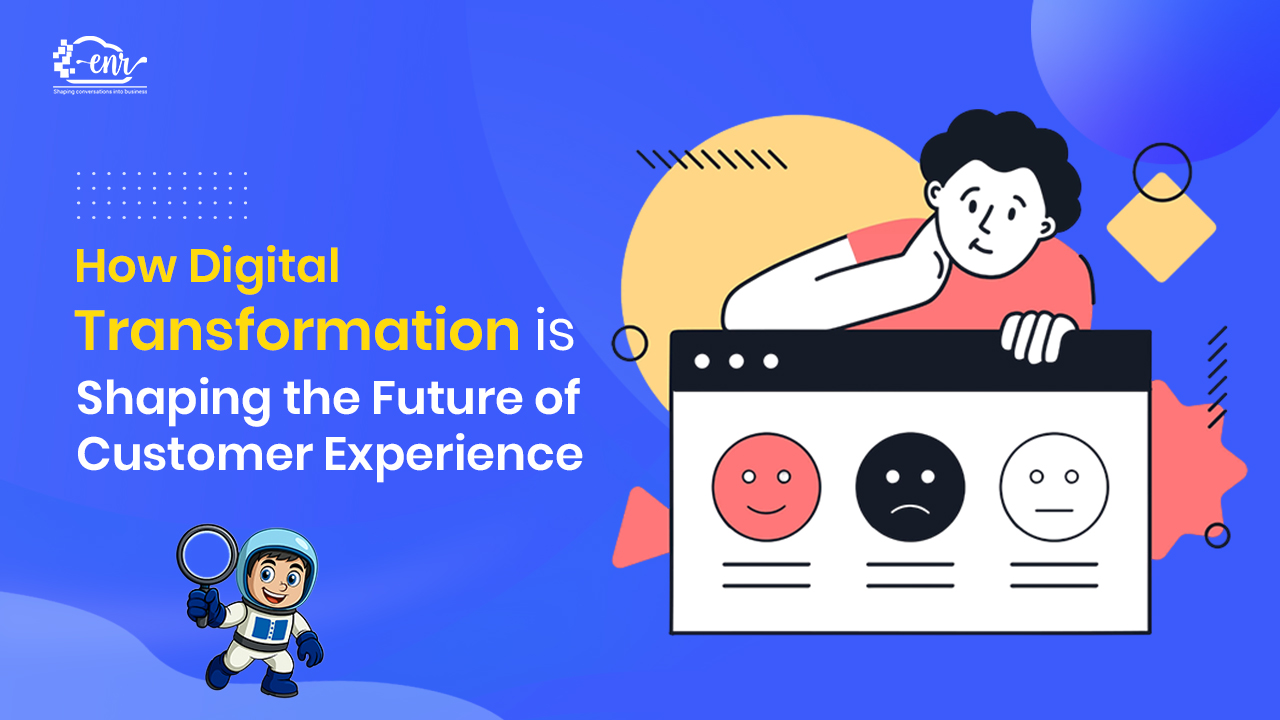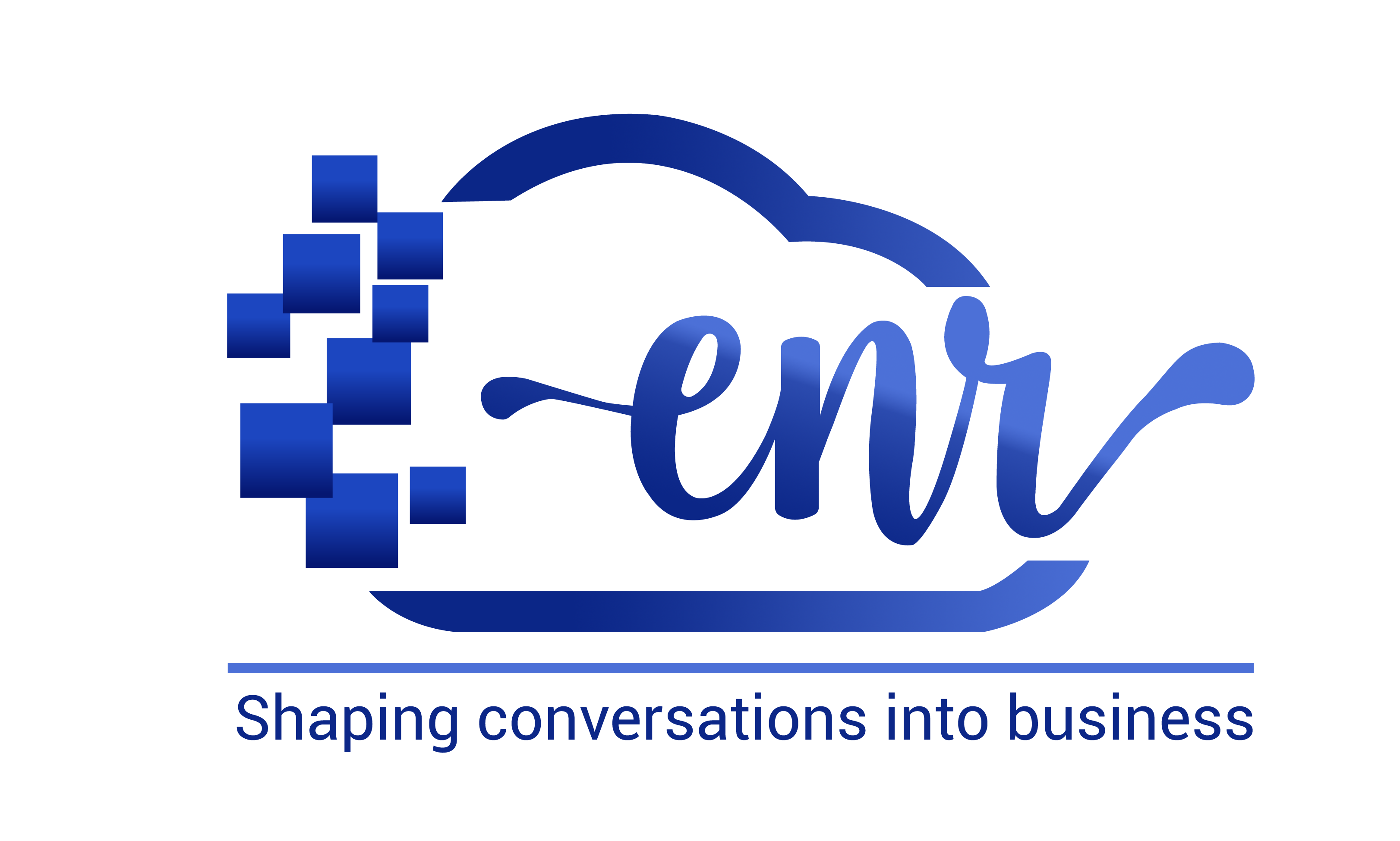Still, clinging to old ways?
I mean yes !! if you still think there is uniformity to customer engagement.
Customers today have become more selective and demanding for specific tailor-made experiences, so you have to go beyond what only offers basic personalization.
The new term of the times is HYPER PERSONALIZATION – the next level of creating completely unique experiences for each customer.
Hyper-personalization, if done effectively, allows the brand to have more engaged conversations, build new relationships, strengthen existing ones and improve overall customer experience.
The need for hyper-personalization comes from the need to simplify the decision-making.
Yet many brands continue to be on the back foot in providing hyper-personalization experiences.
Therefore, let’s explore what hyper-personalization is and why hyper-personalization is a need of the hour as ultimately, it’s about forming deep personal relationships with consumers.
Table of Contents
ToggleWhat is Hyper Personalization?
More than just jargon, hyper-personalization represents an entire paradigm shift in the way brands interact with customers.
Hyper-personalization can be defined as advanced marketing strategies, that use AI-driven data, analytics and real-time data to provide highly personalized experiences to individuals, based on their unique interests, preferences, behaviours and demographics.
Personalization based on grouping the customer is not sufficient to retain the customer and make them loyal, for a higher conversion rate, using granular level data to tailor offers, and interactions as per user needs and preferences is what hyper-personalization does.
For instance, while the conventional techniques involved simply adding one’s name to an email or recommending products based on past purchases – hyper-personalization introduces new data analysis methods thereby making sure that personalised messages sent to customers should suit the individual characteristics based on their behaviour pattern as the customer gets attracted to the product that appeals to them.
Hyper-personalization goes beyond conventional technique— it’s about crafting a bespoke experience for each user.
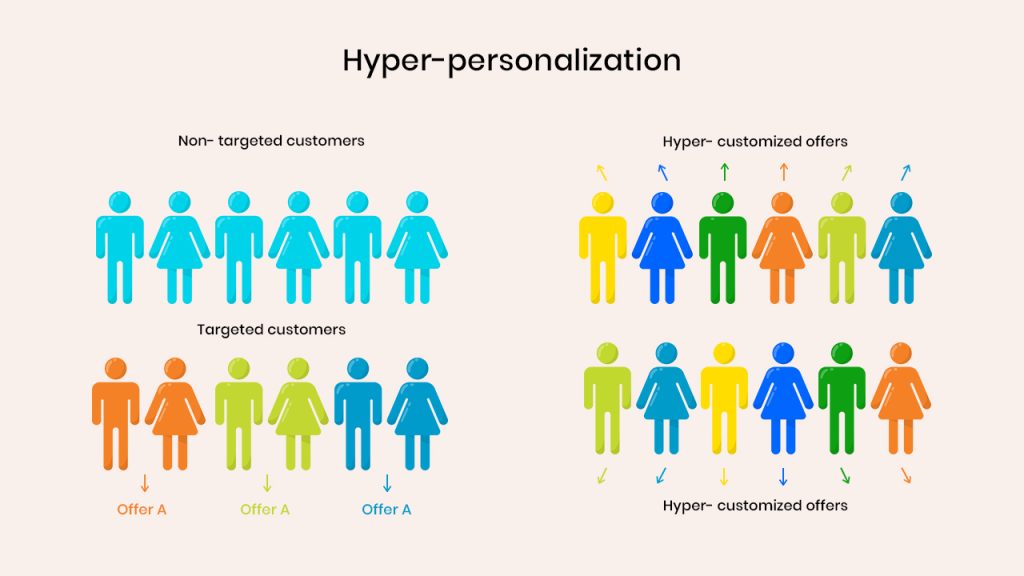
Hyper Personalization is Different from Traditional Personalization. How?
Traditional Personalization
Traditional personalization is limited to customization based on data of customer related to their basic information such as name or past purchase.
It lacks the depth needed to truly understand individual preferences and behaviour.
Hyper Personalization
Hyper personalization utilizes AI ML to analyse granular data sets to tailor the content, delivery timing, and delivery channel. Using first-party data and leveraging advanced AI tools and analytics, enables thinking about what interests consumers, what doesn’t, what consumers are passionate about, what they dislike, and more.
Hyper personalization operates in real-time data, analyzing the real-time behavior of consumers and responding to content similar to that behavior leading to higher conversion rates than traditional personalization.
Why Hyper Personalization is The Priority of The Brand?
1. Increased Consumer Expectations:
Today’s customers expect brands to utilise the data they share to understand and reflect their needs and deliver relevant content and offers.
According to research, 80% of customers will probably buy from a company that offers specialised engagement.
Hyper personalization meets these expectations and influences customer decision-making by presenting information tailored to their needs.
2. Competitiveness Among Brands:
With more digital, data-first and D2C brands competing for the same consumer attention your brand must distinguish yourselves among different brands.
The consequence of this crowded marketplace is the increased intensity of outreach, as three out of four customers have said that they receive too many email promotions from the brand and around 69% have unfollowed the brand on social media, they once followed.
These stats reflect that the brands are not serving the customer as per their interest.
Hyper-personalization allows brands to differentiate themselves by offering unique experiences that cater to individual preferences, thereby fostering stronger connections with their audience.
3. Improved Customer Loyalty:
When consumers feel understood and valued they are more likely to remain loyal to a brand. Hyper-personalization helps you cater to the needs of customers by forming deeper relationships with brands. It also helps the brand build loyalty by delivering consistent content and offers, that are of utmost relevance thus raising customer retention.
Loyalty is hard to gain but once they become your loyal customer they not only keep coming back but will also turn into brand advocates.
4. Enhanced Marketing ROI:
Marketing campaigns can be considerably twiddled behind the scenes via hyper-personalization throughout the entire lifespan of a product cycle for some businesses including Amazon.com., Netflix or Starbucks.
Hyper-personalization can greatly improve the success of marketing campaigns by ensuring that the right people get the right messages at the right times. This leads to higher conversion rates, lower customer acquisition costs, and ultimately a better return on investment (ROI).
5. Data-Driven Decision Making:
Data powers hyper-personalization. By gathering and analysing limitless pieces of information about their customers, brands can uncover a deeper understanding of consumer behaviour and preferences, allowing them to make more informed marketing decisions. In addition to enhancing personalization efforts, this data-driven approach also helps in identifying fresh opportunities for growth.
Hyper Personalization Examples:
1. Netflix
Personalized Content Recommendation
Netflix uses advanced algorithms as well as machine learning to analyse every user’s viewing history, rating and what they do when they watch Netflix. It then recommends
movie and series according to individual preference, making sure that every single individual gets access to the kind of content they would like most.
Outcome: Such hyper-personalization keeps users interested resulting in higher engagement, increased time spent on the platform and greater customer satisfaction by making it easier for them to look for content they’ll love.

In addition to providing users with personalized content recommendations, Netflix also customizes its thumbnails or cover images of shows and movies depending on what the user has watched before. For instance, if a viewer enjoys rom-coms, he/she might observe that one thumbnail highlights the love element in a certain flick.
Outcome: This subtle personalization strategy increases CTR by making content more appealing based on each person’s liking.
2. Amazon
Personalized Shopping Experience

Amazon uses a combination of browsing history, past purchases, and real-time behaviour to give personalized product recommendations. When you log in as a buyer, you see modified items that are in line with what you have been looking for or buying before.
Outcome: These personalized recommendations lead to higher conversion rates, drive repeat purchases and add value to the overall shopping experience.
3. Spotify
Customized Playlist

Spotify’s “Discover Weekly” and “Daily Mix” playlists are prime examples of hyper-personalization. The platform generates personalized playlists based on each user’s listening preferences such as favourite genres, preferred artists and songs.
Outcome: By presenting new music similar to what they have been listening to in past, these customized playlists captivate users’ interests leading to enhanced user loyalty and happiness.
Also Read – Art of Personalization
Conclusion
Hyper personalization, the last frontier of customer engagement moves away from traditional personalization by offering distinctive experiences individualized to each person’s behaviour, actions and preference. While conventional personalization is based on simple things like names and shopping history, AI can gear hyper personalization via high specification contacts powered by real time analytics.
Brands are today embracing hyper personalization so as to distinguish themselves from other brands when there is increased consumer expectation towards tailored experiences hence leading to stronger customer relation which results in improved business performance.
Want to understand how Hyper personalization works for your business? Let’s connect to discuss.
Alisha Limichana is a seasoned growth marketer and part of the MCG team at EnR Cloud, specializing in driving business growth through innovative strategies. She has a proven track record of delivering impactful marketing campaigns. Outside of work, Alisha enjoys exploring the mountains, travelling, and staying active and fit.
